De Zeventiende Eeuw. Jaargang 15
(1999)– [tijdschrift] Zeventiende Eeuw, De–
[pagina 34]
| |
Adriaen van de Venne, Jan Steen, and the art of serious play
| |
The play element of artLike play in Huizinga's definition, the production, acquisition, and viewing of pictures in the Dutch Republic were largely voluntary activities.Ga naar voetnoot2 Even when themes were prescribed by patrons or by market demand, painters freely distinguished their works by emphasizing novel aspects of their subjects, inserting signature motifs, or painting in new styles. Seventeenth-century painting also met the second part of Huizinga's definition of play, in that it was very much ‘not “ordinary” or “real” life’, stood ‘outside the immediate satisfaction of wants and appetites’, and presented itself ‘as an intermezzo, an interlude in’ daily life. It might seem more difficult for painting to observe Huizinga's | |
[pagina 35]
| |
third criterion for play: ‘its secludedness, its limitedness’ in space and time. And yet in the seventeenth century the viewing of works of art frequently took place in what Huizinga called ‘play-grounds [...] within which special rules obtain’, and during times set aside for the purpose. The amateur might look at paintings or drawings alone in his study or cabinet, or display them in such spaces to a few like-minded friends. Numerous are the accounts of visitors to major towns who sought out collections or artists' studios. Certain rules of etiquette for the proper display of, and response to works of art must have applied on these occasions. Huizinga's fourth feature of play appears virtually derived from visual art. It is worth quoting him at some length: [play] creates order, is order [...]. It may be that this aesthetic factor is identical with the impulse to create orderly form, which animates play in all its aspects. The words we use to denote the elements of play belong for the most part to aesthetics, terms with which we try to describe the effects of beauty: tension, poise, balance, contrast, variation, resolution, etc. Play [...] is invested with the noblest qualities we are capable of perceiving in things: rhythm and harmony. Huizinga was surely thinking of sports and dance when he offered these terms, but they would not have been out of place in art criticism from the 1930s, and seventeenth-century art theorists had equivalents for each of them. The element of tension, Huizinga's fifth characteristic of play, flows from its aesthetic challenge: ‘the player wants something to “go”, to “come off”; he wants to succeed by his own exertions’. The tension of play, in Huizinga's words, ‘imparts to it a certain ethical value in so far as it means a testing of the player's prowess’. Huizinga recognized that this agonistic aspect of play is at work in the time-honored, still viable tradition of creative rivalry among artists. His sixth fundamental characteristic of play strengthens this observation. A player's ability to demonstrate winning skill is contingent on everyone's honoring the rules that hold the game together. More destructive than the cheat, who at least pretends to keep up the rules, is the spoilsport, who declines to participate and thus lets real life collapse the world of make-believe. Although seventeenth-century Dutch painters were bound to an elaborate set of guild regulations, I would argue that an altogether different, unspoken set of rules constituted the primary play element of Dutch art, and especially (though not exclusively) of illusionist painting. These rules set up a voluntary contract between the painter, who created what everyone knew to be a fiction, and the viewer, who agreed to suspend disbelief before the painter's miraculous representation of the visible world on a twodimensional surface. The beholder who refuses to be taken in by the feint is the classic spoilsport: as Huizinga put it, ‘he robs play of its illusion’, a word which, he pointed out, ‘means literally “in-play”’. The creation of the most deceptive pictorial illusion was just the challenge most often reported in ancient accounts of contests between artists or of the rivalry between the painter and nature, who is the quintessential artist.Ga naar voetnoot3 Pliny's famous story of the con- | |
[pagina 36]
| |
test between the Greek painters Zeuxis and Parrhasius acknowledges both the agonistic drive that produces the perfect imitation and the viewer's crucial willingness to be deceived: In a contest between Zeuxis and Parrhasius, Zeuxis produced so successful a representation of grapes that birds flew up to the stage-buildings where it was hung. Then Parrhasius produced such a successful trompe-l'oeil of a curtain that Zeuxis, puffed up with pride at the judgement of the birds, asked that the curtain be drawn aside and the picture revealed. When he realized his mistake, with an unaffected modesty, he conceded the prize, saying that whereas he had deceived birds, Parrhasius had deceived him, an artist.Ga naar voetnoot4 Zeuxis was so confident of his victory that he was more than willing to view his rival's illusionist picture. When tricked, he readily admitted that Parrhasius had been victorious because he had not just fooled the eyes of birds, but those of an artist - an expert in the game of painting. Zeuxis's comment places the contest within the realm of initiates that Huizinga identified as the final irreducible element of play. To paraphrase him, the game of art is ‘for us, not for the “others”’.Ga naar voetnoot5 The birds that flocked to Zeuxis's painted grapes could not understand the point of the exercise; only he who deceives someone ‘inside the circle of the game’ can win the laurel. | |
Illusion and paradox in the paintings of Jan SteenLike Parrhasius's curtain, many a seventeenth-century Dutch painting depended for its full effect on an expert, knowledgeable beholder willing to take up the playful challenges posed by the artist. Adriaen van de Venne and Jan Steen deliberately pursued a seriocomic art, which invites the viewer to enter a game of teasing out meaning that is always ambiguous. But their extreme cases are different in degree, rather than kind, from those of other seventeenth-century painters, all of whom invited their viewers to play along with their fictions. Thus Rembrandt (1606-1669) dared his viewers with novel representations of ‘serious’ subjects, and Gerard Dou (1613-1675) perfected a foolery of the eye, complete with illusionist curtains, that earned him the title of ‘the Dutch Parrhasius’.Ga naar voetnoot6 Dou's picture of a Maid with a Basket of Fruit (Fig. 1), painted in 1657 in the extremely fine manner that Dou made the hallmark of art in Leyden, offers us the illusion of peeking through a window into a virtually real world, but one ‘in very neat smallness’, as a contemporary phrased it.Ga naar voetnoot7 It gives us the options of interpreting her supine chick- | |
[pagina 37]
| |

Fig. 1 Gerard Dou, Maid with a Basket of Fruit, 1657. Waddesdon Manor, National Trust.
en, peaches, and grapes as self-conscious displays of Dou's mimetic skill or as metaphors for the maiden's status as purveyor of illicit pleasure.Ga naar voetnoot8 Dou did not resolve the ambiguity, challenging viewers to mull the narrative possibilities. But to the most conscientious connoisseurs the picture must have resembled a sly play of the artist on the tradition of illusionist painting and on the viewers themselves. The elaborate bird house on the right, empty for the moment, would have alerted many a contemporary that this girl is displaying her grapes for the same reason Zeuxis painted his: to lure birds. In Dou's case, the marveling viewer is the bird, held captive by Dou as securely as Zeuxis was by his rival. Close scrutiny of the bird contraption reveals the master of this game, for its glass water bowl reflects the artist and his easel in exquisite miniature. Jan Steen's Girl Offering Oysters, painted in Leyden about 1660, is a play upon Dou's specialty of maidens addressing the viewer from windows and niches (Fig. 2). Steen must have known this type of painting well through his friendship with Frans van Mieris (1635-1681), Dou's most illustrious pupil. His picture of the seductive young lass | |
[pagina 38]
| |
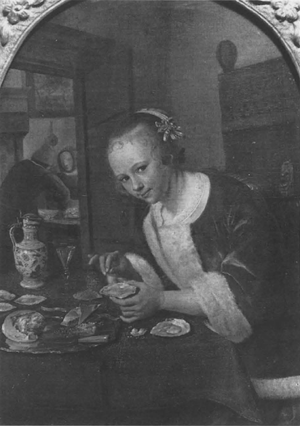
Fig. 2 Jan Steen, Girl Offering Oysters, ca 1660. 's-Gravenhage, Koninklijk Kabinet van Schilderijen het Mauritshuis.
with her aphrodisiac oysters and fine tableware has been seen as a particularly powerful illusion.Ga naar voetnoot9 The panel's tiny size of just twenty by fifteen centimeter, however, immediately alerts us to its status as a mere artistic proposition. No one would mistake her for a real seductress. To enjoy the painting's pleasures requires the instant suspension of disbelief demanded by all self-consciously lifelike painters, from Parrhasius to Dou. With a coy turn of the head and a slight smile, the young woman invites us to sample an oyster she has just spiced with pepper and is now seasoning with salt. The salt on the silver platter heightens the piquancy of her offer, for salt was the proverbial substance used to catch birds, the category of animals still metaphoric for male genitals and their owners. The condiment also hints that she may be a virgin, for in seventeenth-century lore, maidens who forgot to place salt on their tables were believed to have lost their virtue. And yet, her tempting action and pictorial affinity with Dou's ambiguous kitchen maids make us question her innocence. Her direct gaze and smile would be indecorous | |
[pagina 39]
| |
at best, for a virtuous maiden, but if she is not, Steen has masked her status. Unlike Dou's servant women, this fashionably attired girl has kitchen staff of her own, more sketchily painted in the background. She sprinkles on the salt with a delicate gesture, which contemporary etiquette considered fit for a lady. The Girl Offering Oysters plays on appearance. She may or may not be who she seems to be, and she is as seductively deceptive as painting itself. Like all eye-fooling pictures of girls in niches, Steen's temptress makes a pun enabled by seventeenth-century Dutch, in which the words verleyden and verlokken interchangeably mean to seduce, to deceive, and to fool.Ga naar voetnoot10 For all the painting's contrived ambiguity, which makes us responsible for judging its proposition, most of Steen's viewers would have seen his woman as an expensive call girl. Even so, the cabinet piece is more than a beholder-beware statement. Its sophisticated execution and deft metaphors in celebration of a figure of potentially low virtue make it a brilliant pictorial equivalent of an ancient rhetorical figure: the paradoxical encomium. Rosalie Colie and Walter Kaiser, among others have detailed the contagious success of this ancient exercise among Renaissance humanists.Ga naar voetnoot11 The paradoxical encomium's fundamental conceit is simple: the orator or writer delivers extravagant praise of ‘things of no honor’, as English practitioners of the genre defined them, from baldness and lice to inebriation, the gout, or nothing. The purposes of the performance are the cultivation and display of the orator's command of argumentation and ornament. Ultimately, the encomium refers its audience to the speaker's or writer's art as much as the subject at hand. Practiced in profusion on issues of little social or religious relevance, as it was, the exercise was the vehicle of empty virtuosity. Indeed, this emptiness gave it the ‘disinterestedness’ Huizinga found central to all play.Ga naar voetnoot12 Yet the most agile minds infused the encomium's irresolvable irony with sufficient social satire to encourage critical judgment as well as admiration. The most famous example of ironic paradoxy that is entertaining and stunning, yet socially poignant and thought provoking, is Erasmus's Praise of Folly. In steering to an eventually serious purpose - the promotion of a Christian ethos of free will - it is also unexpectedly rare.Ga naar voetnoot13 While Steen's interest in Erasmian irony permeates his production, his chaotic Village | |
[pagina 40]
| |

Fig. 3 Jan Steen, The Village School, ca 1670-1672. Edinburgh, National Gallery of Scotland.
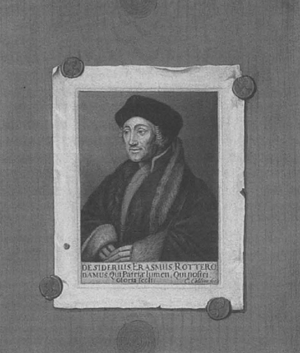
Fig. 4 Edwaert Collier, Trompe l'oeil of an Engraving of Desiderius Erasmus after Hans Holbein the Younger, ca 1680-1700. London, art market.
| |
[pagina 41]
| |
School of about 1670 is his most explicit statement of it (Fig. 3). Dame Folly dedicates a chapter of her laudatio to the delusions of under-nourished school teachers, who grow old and deaf as they toil in filth amidst hordes of unruly children. ‘And yet’, claims Folly, through my benefit they consider themselves men like no others. So lordly a thing they find it, when they scare their fearful flock with a threatening voice and countenance. So princely a punishment they think it to thrash the poor boys' arses with rods and ferules, playing the tormentors and termagants among them.Ga naar voetnoot14 Little learning takes place in Steen's school, which resembles Erasmus's filthy sty. The shortsighted master is deaf and blind to his students, consumed only by the sharpness of his quill, and the mistress holds her switches at the ready. The curriculum blatantly ignores Erasmus, who agitated throughout his career against the senselessness and cruelty of teachers and whose writings on proverbs, manners, and folly held pride of place in actual Dutch schoolrooms. An engraved portrait of the humanist, loosely modeled on a print like the one painted illusionistically by Edwaert Collier (Fig. 4), stares at us from the right foreground. Presumably a pupil has torn it from one of the discarded books in which it has been stuck. We might take such irreverence as a jest at Erasmus's expense, and it is that, but its presence in a corner that was often reserved for the painter's signature may imply Steen's recognition of Erasmus's copyright of this scene. Erasmus himself would have smiled at the joke, for he reserved Folly's sharpest satire for wise men, philosophers, teachers, and other know-it-alls. Although Steen's individual paintings cannot match the sustained irony and satire of Dame Folly, their technical brilliance and oscillation between proper wisdom and outrageous folly places them under her auspices. In Steen's paintings as in the laudatio of Erasmus, rhetorical play fuses wisdom and folly, and makes one the prerequisite of the other.Ga naar voetnoot15 Like Erasmus, Steen did not lavish praise on just any thing of dishonor, on the first bit of vermin or minor disgrace that came to mind, but on figures and conditions of serious social concern, from education to the management of concupiscence. But in the best traditions of the mock encomium, Steen offered the perceptive viewer, the beholder who is willing to play, sufficient clues to the true nature of his subjects. And as Erasmus had done in the Praise of Folly, he called attention to his authorship of his ironic fictions, by his signatures, sheer technical mastery, and jokes upon hallowed formulas of art.Ga naar voetnoot16 For | |
[pagina 42]
| |
while Steen's Girl Offering Oysters is a send-up of Dou's seductresses, his Village School parodies Raphael's utterly rational School of Athens, as Graham Smith proved some time ago.Ga naar voetnoot17 | |
Adriaen van de Venne and the ironic grisailleWell before Steen, Adriaen van de Venne had built a career on seriocomic pictures in an Erasmian vein. Much of his production answers to the title of his two engravings of Children's Games: Ex seria nugis, ‘Seriousness from trifles’.Ga naar voetnoot18 The purpose of these prints as illustrations to Jacob Cats's conduct books made them tip the balance towards the earnest, but most of Van de Venne's paintings are especially serious about trifling. Although Van de Venne generally eschewed illusionist play, he lightened one serious painting with a self-conscious motif in the tradition of Zeuxis and Parrhasius. A fat fly appears to have alighted on the Fishing for Souls, his allegory of 1614 on the religious practices of preachers and priests (Fig. 5). Emphasizing the fiction of Van de Venne's art, the bug casts its shadow forever on the turquoise water between the left shore and the boat in the foreground. Such marks of authorship are more insistently present in a genre of paintings entirely of Van de Venne's invention. Around 1625, when Van de Venne moved from Middelburg to the political center of The Hague, he stopped painting large polychrome works such as the Fishing for Souls and began to specialize in painting countless grisaille panels (Fig. 6-10).Ga naar voetnoot19 Most of these monochromes, no larger than forty by thirty centimeter, represent paupers, boors, or vagrants from the bottom of the social hierarchy, or rather outside the structures of civic life. These vagabonds flout the conventions of civilized bearing, which Van de Venne observed scrupulously in his portraits of the Dutch elite. Invariably, he set down their distorted physiognomies and misshapen bodies with a sharp and sure touch. Many of his ragamuffins are demonstratively infirm, stumbling in blindness, hinged on crutches, patched up with tattered bandages. Several flaunt mental disorder, shrieking openmouthed or picking fights. Van de Venne's social cripples do what they purportedly did best: stagger about, shout with abandon, dance without mirth, brawl without cause. Van de Venne used grisaille to forge trenchant metaphors for social disruption. The technique is itself significant, for its colloquial designation in the seventeenth century, | |
[pagina 43]
| |
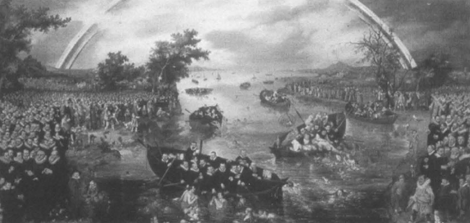
Fig. 5 Adriaen van de Venne, The Fishing for Souls, 1614. Amsterdam, Rijksmuseum.
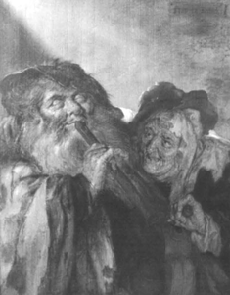
Fig. 6 Adriaen van de Venne, Fray en Leelijck, ca 1630-1635. Private Collection.
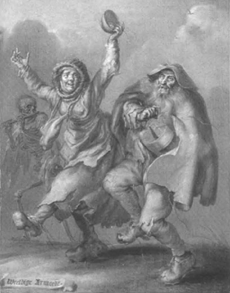
Fig. 7 Adriaen van de Venne, Weeldige Armoede, 1631. Springfield, Museum of Fine Arts.
grauw (gray), was synonymous with elite society's term for the dispossessed, the grauw or colorless masses.Ga naar voetnoot20 Van de Venne assembled representatives of the grauw in unruly, rent compositions, and let them dissolve in gray and ochre fogs. His fighting, dancing, begging poor are self-contained, in indeterminate spaces outside the ordered localities of the early modern polity. | |
[pagina 44]
| |
How were Van de Venne's peers to take his finely crafted but physically debased figures, which in us may raise pity but more likely a distaste for such a grotesque representational code? A contemporary viewer would have experienced neither of these sentiments. Since the late Middle Ages, Netherlandish regulation and representation of charity and poverty had been geared to the control, ridicule, and prevention of beggary, as mendicants were increasingly seen as culpable for their poverty.Ga naar voetnoot21 In addition to the signs of disorder I have mentioned, Van de Venne employed a powerful distancing mechanism that guarantees his viewers' understanding that these figures are socially and morally diseased. Most of his grisailles display inscribed banderoles, which turn the represented lowlifes into figures of fun. Directed to the viewer, these captions are not perceived by the decrepit protagonists and never pretend to record their speech; they are ironic glosses that articulate an understanding shared between painter and viewer. As Marc van Vaeck has demonstrated, they stand in the tradition of the Erasmian proverb, which sported wit, ambiguity, and a certain folksy humor.Ga naar voetnoot22 Van de Venne's cryptic captions engage the viewer's critical faculties, in matters of social order as well as artistic discernment. One revel, for instance, is glossed All Kromme Lappen, or ‘All Crooked Rags’, in an obvious reference to tattered clothes and makeshift bandages (Fig. 9). But lappen, rags, is also a verb denoting all sorts of reprehensible behavior, from cheating to spilling to indulging oneself. If taken in this sense, the inscrip- | |
[pagina 45]
| |

Fig. 8 Adriaen van de Venne, Allom-arm, 1635. 's-Gravenhage, Koninklijk Kabinet van Schilderijen het Mauritshuis.
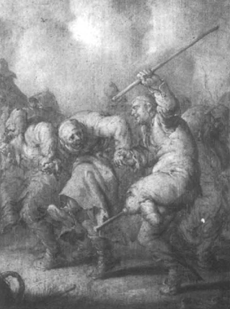
Fig. 9 Adriaen van de Venne, All Kromme Lappen, 1633. Antwerpen, Museum Mayer van den Bergh.
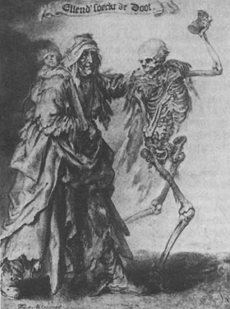
Fig. 10 Adriaen van de Venne, Ellend' Soeckt de Doot, 1630s. Location unknown.
tion reads ‘All the Crooked Cheat’ or ‘All the Crooked are Self-Indulgent’. The crooked in this case are bent morally as well as physically, and they are indeed Van de Venne's cruelest caricatures of hunchbacks. Several of Van de Venne's commentaries identify death as the rightful end of self-in-flicted poverty. In a stunning version of the traditional Dance of Death, a haggard | |
[pagina 46]
| |
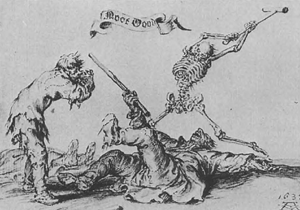
Fig. 11 Adriaen van de Venne, Noot Dood, 1638. Wien, Graphische Sammlung Albertina.
woman with a broken arm and a baby on her back grabs the shoulder of the grim reaper (Fig. 10). The caption states Ellend' Soeckt de Doot, or ‘Misery Seeks Death’: the wretch, as Misery personified, seeks permanent relief from her lot. But in another sense her miserable condition itself seeks, or leads to, and hence is responsible for, death. And in the syntactical inversion always possible in Dutch, De Doot soeckt Ellend' - Death will seek out Misery.Ga naar voetnoot23 In a drawing from 1636, Death wields his victim's crutch as a club (Fig. 11), in a graphic representation of the inscription Noot Dood - which means ‘Hard Death’ or equally, and more poignantly, ‘Need Kills’. If we take the first word, noot, as verb, we are posed an ironic query: ‘Does death invite?’ Although the question is fundamentally irresolvable, Van de Venne encourages us to ponder its very insolubility. By dint of their irony, ambiguity, and social charge, Van de Venne's grisailles are of a kind with the Praise of Folly. None of his individual panel pictures can match the sustained oration of Erasmus's Dame Folly in complexity of mental turns and technical virtuosity, but collectively they form a set of musings she might have uttered. Like Folly, Van de Venne's lowlifes appear singularly unconcerned about their condition (Fig. 6-9); indeed, they announce and celebrate their scandal just as Folly praises her gifts. Folly's listeners can never be entirely certain just what she is espousing, or even who is doing the praising - Folly or Erasmus - and Van de Venne's figures similarly destabilize the viewer's response. In his literary work Van de Venne repeatedly tried his hand at the paradoxical encomium, once coupling an elaborate eulogy of Dutch peat with an ironic diatribe against tobacco, under the heading Wys-mal - ‘Wise-foolish’.Ga naar voetnoot24 Several of Van | |
[pagina 47]
| |
de Venne's grisailles advertise their paradoxicality: like the music and physiognomies of a grimacing couple (Fig. 6), his picture of them is at once fray en leelijck, ‘beautiful and ugly’, as the inscription states, in a moral but also a formal sense. For while grisaille was eminently suited to the representation of drab outcasts, it was also a challenging artistic technique, admired by connoisseurs for the painter's ability to do more with less.Ga naar voetnoot25 Van de Venne's choice of the lofty grisaille technique for the lowliest themes heightened the paradoxical character of his grauwtjes. Alerted to their ambiguity by the proverbial inscriptions, Van de Venne's canniest viewers surely perceived their affinity with the literary encomium of the unworthy. The Praise of Folly, the Village School, and Fray en Leelijck could be enjoyed fully only by a willing player, an initiate secure in the social fabric, adept at deciphering puns and savoring virtuosity.
On the first page of Homo Ludens, Huizinga posited his crucial insight that ‘in play there is something at play’.Ga naar voetnoot26 It was his prefatory admission that play might after all not be the irreducible category of culture he wished it to be, an acknowledgment that play serves serious purpose beyond its seriousness about itself. Steen, Van de Venne, and their audiences knew this well. Abstract - Although Johan Huizinga, in Homo ludens, was reluctant to see art as ludic, the success of most paintings depends on the seven formal characteristics he discerned in all play. A fundamental condition of play and art is the willingness of knowledgeable players (artists and beholders) to take seriously a fiction outside ordinary life. The painters Adriaen van de Venne, Gerard Dou, and Jan Steen set up challenging games for initiated viewers, from illusionist motifs to pictorial equivalents of the paradoxical encomium of Erasmus. As in The Praise of Folly and in play, jest and seriousness in these works are indissoluble. |
|

